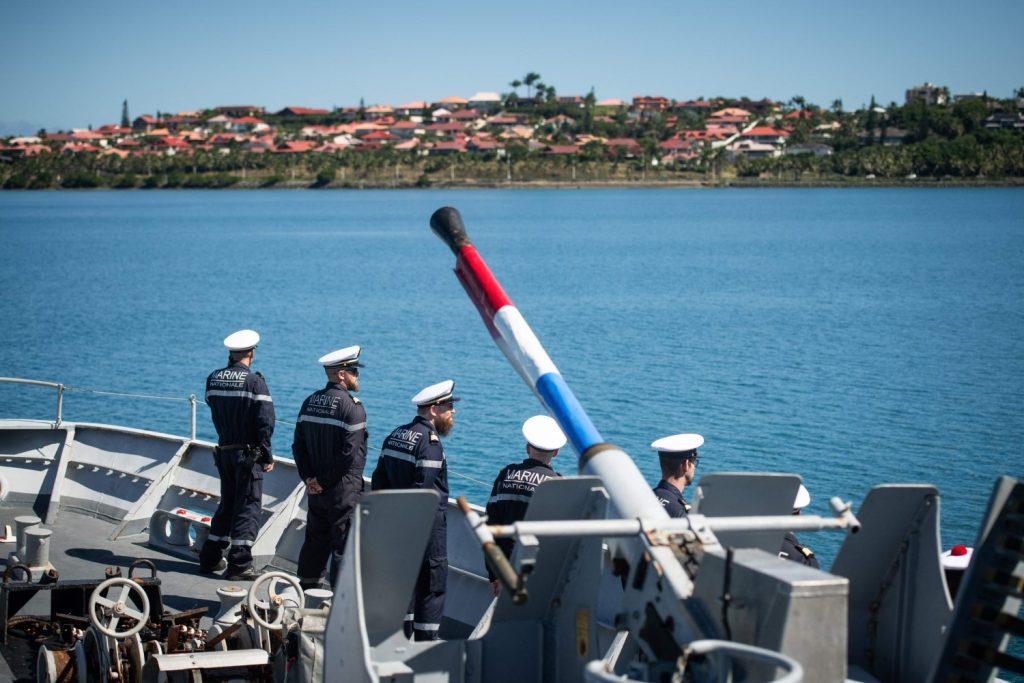
Sea state
Iran seized a US-bound oil tanker in the Strait of Hormuz last week, alleging that it had fled the scene after colliding with an Iranian vessel. Western media sources reported that Iran’s actions were in reaction to the confiscation of an oil tanker by the US in an effort to enforce sanctions on Tehran. The US Navy issued a statement saying the seizure was a violation of international law and a ‘threat to maritime security’.
The French Navy has conducted a maritime-strike and anti-submarine-warfare exercise with the Royal Australian Navy in the Timor Sea. Working with a RAAF F-35A Lightning II and P-8A Poseidon maritime patrol aircraft, the Jeanne d’Arc 2023 group, consisting of a frigate and a landing helicopter dock, manoeuvred to locate, track and engage a submarine. Following the training, the French group visited Townsville before heading to New Caledonia for Exercise Croix Du Sud.
Flight path
Ukraine’s air defence force has shot down a Russian hypersonic Kinzhal missile over Kyiv using a recently acquired US Patriot air-defence system. Ukraine took delivery of the first Patriots last month. They are one of the most advanced US air-defence systems, and crews received extensive training to locate and destroy targets with them. Ukrainian General Mykola Oleshchuk congratulated the Patriot crew for its ‘historic’ downing of the Kinzhal, a capability first unveiled by Putin in 2018.
On 5 May, a US Air Force F-16 fighter jet crashed in a field near a South Korean airbase. The crash occurred after a routine training exercise. The pilot safely ejected from the aircraft and was taken to a medical facility. Local firefighters were dispatched to the scene to extinguish the resulting fire, but no casualties or other damage were reported. The crash is under investigation.
Rapid fire
More than 240 personnel from the Australian Defence Force and the Department of Foreign Affairs and Trade participated in France’s two-week-long Exercise Croix du Sud in New Caledonia. This exercise was spearheaded by the French armed forces to improve the ability of regional partners to conduct humanitarian assistance and disaster relief operations in the Pacific. It is hoped that increasing cooperation in the Pacific will signal a further improvement in Australia–France relations, after tensions that followed Australia’s decision to abandon its plans to buy conventional submarines from France.
The US and Saudi Arabia have initiated talks to reach a humanitarian ceasefire between Sudan’s rival military factions, its army and the rival paramilitary Rapid Support Forces. Fighting between the two has engulfed the Sudanese capital since mid-April. The conflict has stalled an internationally backed democratic transition and poses a serious threat of civil war in a country at the crossroads of multiple geopolitical issues. The US–Saudi initiative has so far made ‘no major progress‘, and the capital continues to be the scene of heavy fighting.
Final frontier
China’s reusable experimental spacecraft returned as planned to the Jiuquan Satellite Launch Centre on Monday after 276 days in orbit. Little is known about the classified spacecraft, which was launched aboard a Long March-2F rocket in August. The landmark mission has fuelled speculation that the craft is likely to be similar to the US Air Force’s Boeing X-37B, an autonomous spaceplane that can remain in orbit for years. The technology may provide a strategic advantage in areas such as military reconnaissance, satellite deployment and space-based weapons systems.
The Chinese military’s top decision-making body has updated its conscription laws to allow former soldiers to re-enlist and increase their expertise in cyber and space-based warfare. The changes reflect Beijing’s concerns about a possible conflict over Taiwan, and target recruitment of science and engineering students with skills relevant to combat roles using space satellites, cyber capabilities and drones. Recruits from top universities will be prioritised to accelerate the People’s Liberation Army’s ability to harness information and intelligence in line with China’s 2027 military-modernisation goal.
Wired watchtower
The Swedish parliamentary website was partially shut down by a distributed denial-of-service attack. This form of cyber assault has gained infamy since the Russian invasion of Ukraine, with hacktivists on both sides exploiting it to impede online activities. The attack occurred a day before Ukrainian President Volodymyr Zelensky’s meeting with Nordic leaders in Finland. Although the timing and characteristics of the attack imply potential involvement of Russian-backed cybercriminals, that has not yet been officially confirmed.
The Ukraine government’s computer emergency response team has identified the notorious Russian hacking group Sandworm as being behind the sabotage of state devices. The group exploited compromised VPN accounts that lacked multi-factor authentication to infiltrate a government network and erase vital files from both Windows and Linux machines using the WinRAR archiving program. This attack bears a striking resemblance to an incident in January that also employed a modified version of a malicious script, increasing the likelihood that Sandworm was involved in the breach.